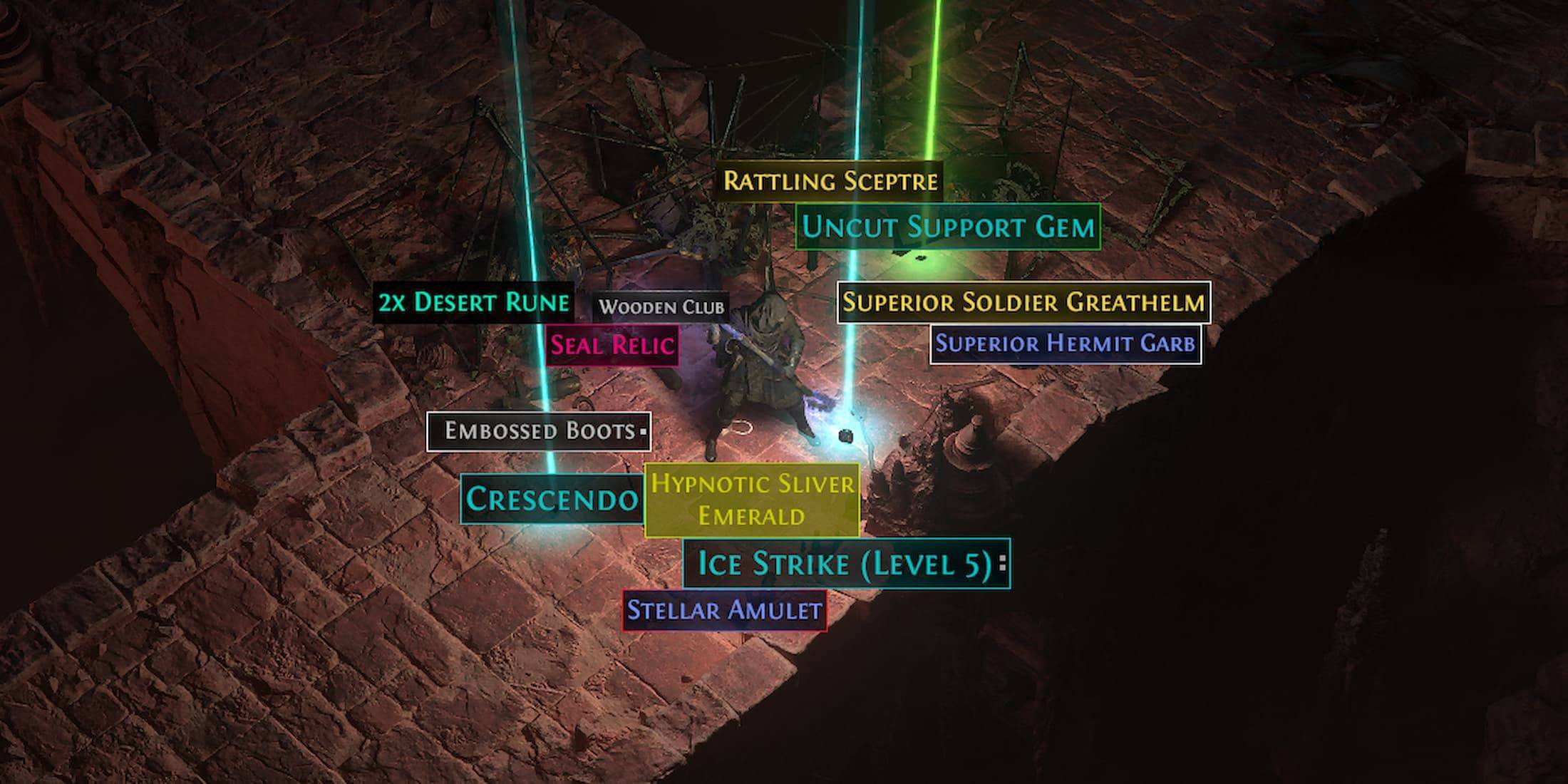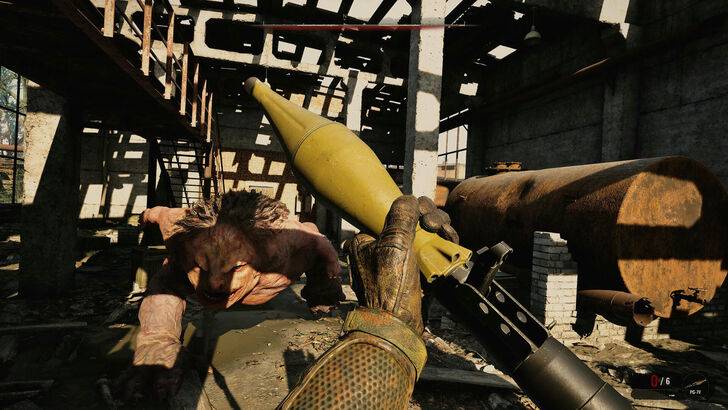For several generations, AMD has been striving to challenge Nvidia's dominance in the high-end graphics card market. However, with the introduction of the AMD Radeon RX 9070 XT, Team Red has shifted its focus from the ultra-high-end, conceding that territory to Nvidia's RTX 5090. Instead, AMD is now targeting the majority of gamers with what it believes to be the best graphics card for them—a goal it undoubtedly achieves.
The AMD Radeon RX 9070 XT, priced at $599, goes head-to-head with the $749 GeForce RTX 5070 Ti, positioning itself as one of the top GPUs available today. AMD enhances the value proposition with the introduction of FSR 4, marking the first time AI upscaling technology has been integrated into an AMD graphics card. This feature makes the Radeon RX 9070 XT the go-to choice for 4K gaming, especially for those not willing to spend $1,999 on the RTX 5090.
Purchasing Guide
The AMD Radeon RX 9070 XT will be available starting March 6, with a starting price of $599. Be aware that prices may vary, particularly with third-party models, which could be more expensive. Aim to purchase one for under $699 to get the best value.
AMD Radeon RX 9070 XT – Photos
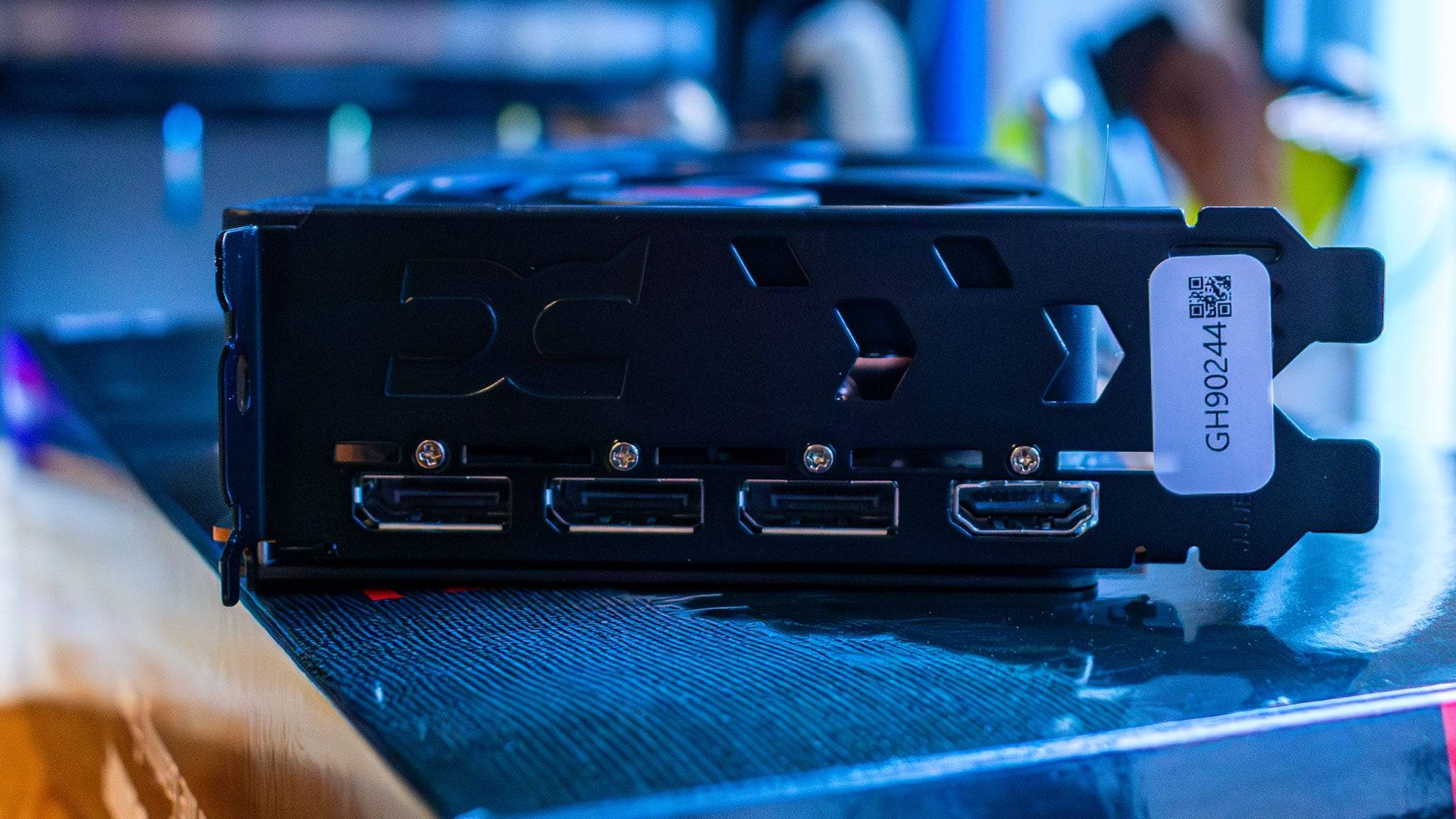
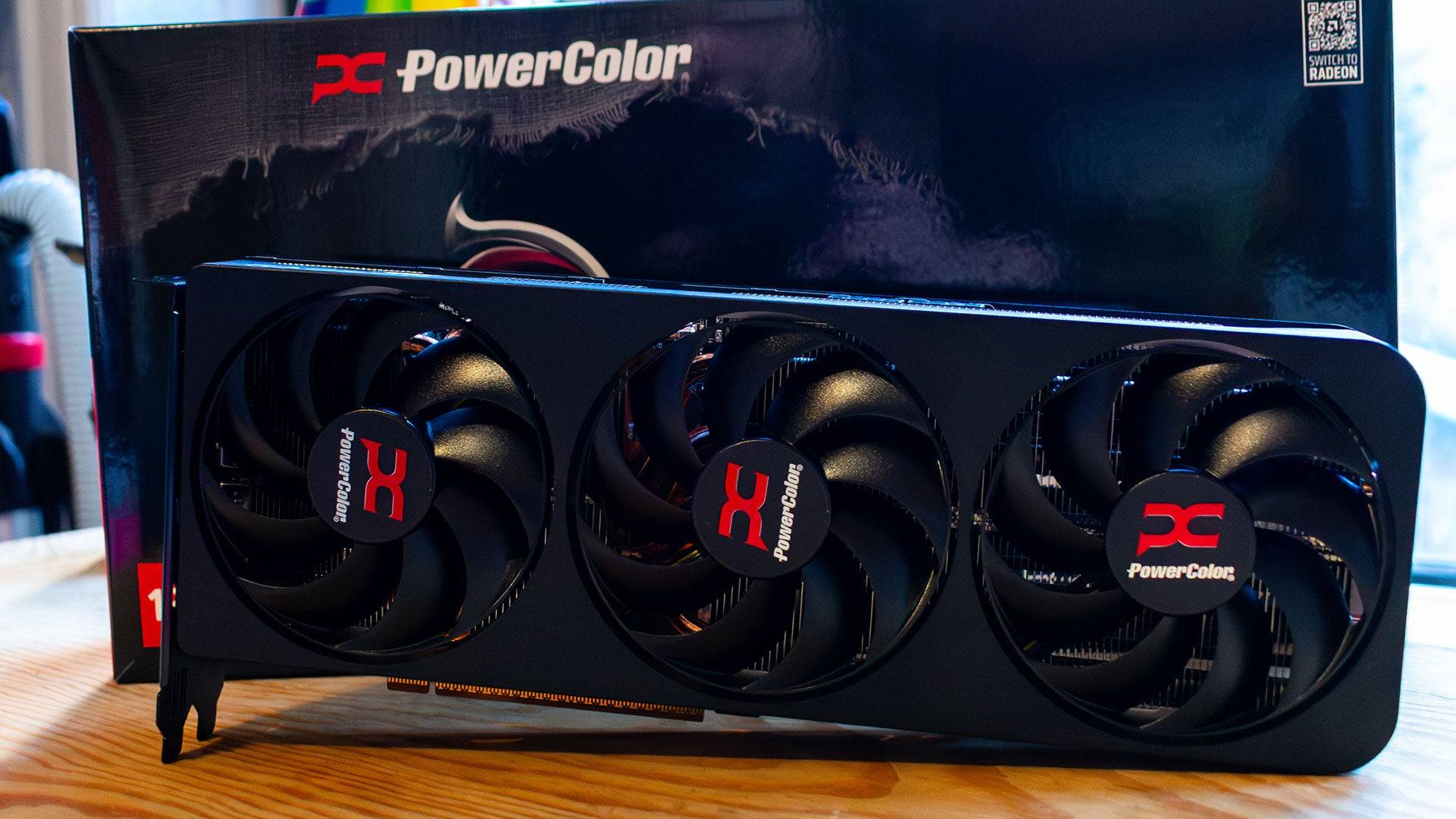 4 Images
4 Images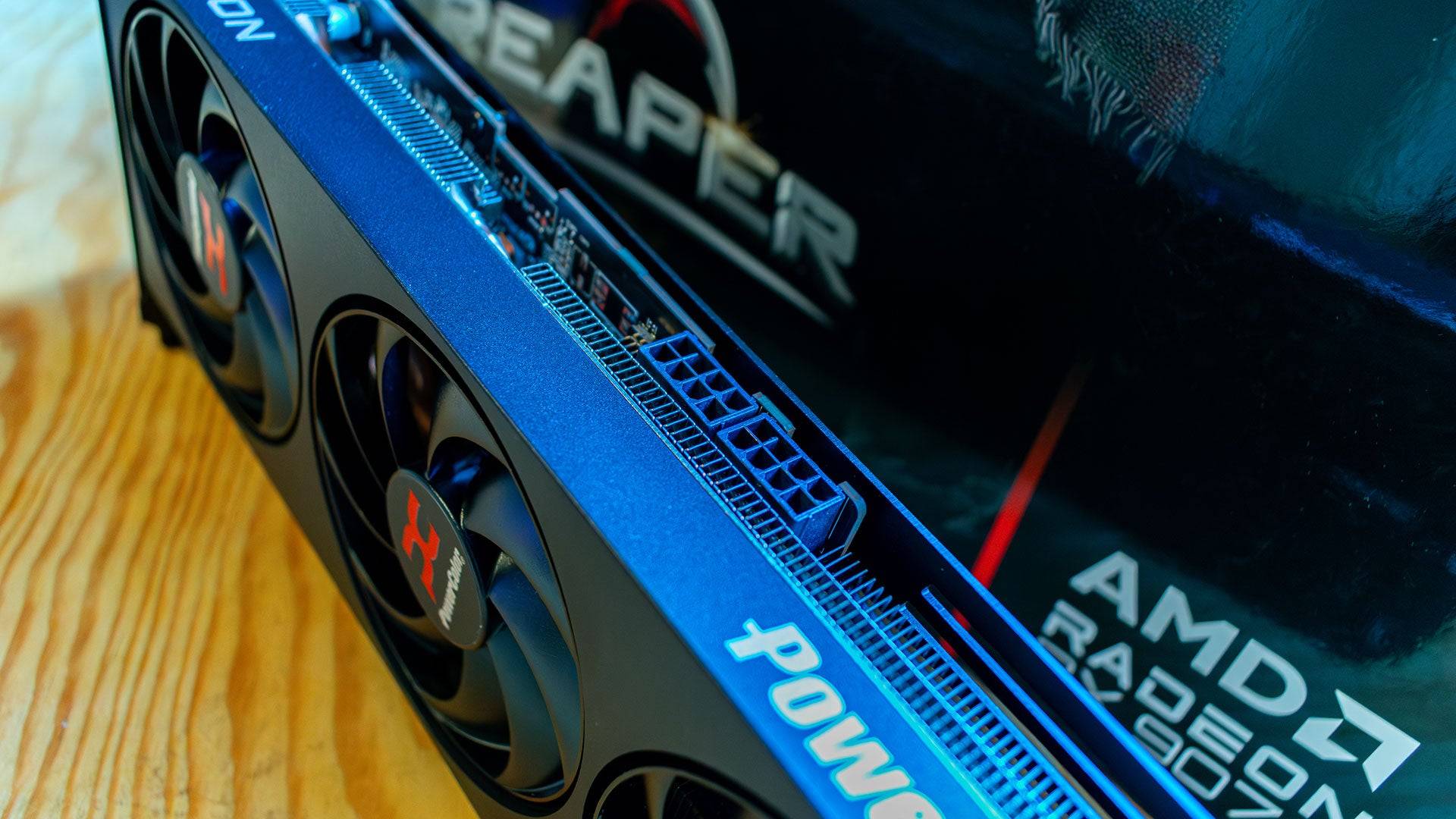
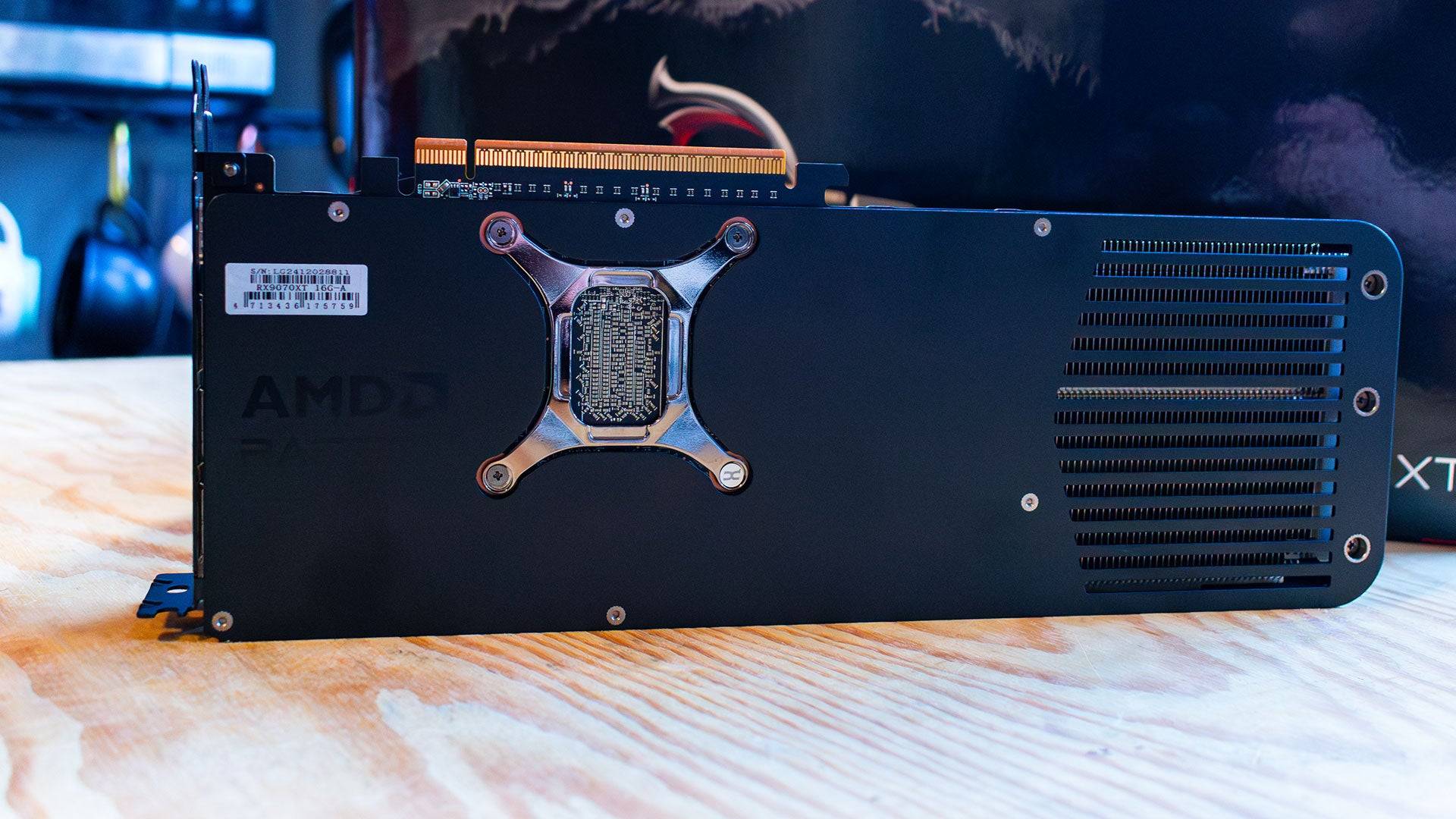
Specs and Features
Built on the RDNA 4 architecture, the AMD Radeon RX 9070 XT boasts significant upgrades, particularly in its RT and AI Accelerators. The AI Accelerators are key to the new FidelityFX Super Resolution 4 (FSR 4), introducing AI upscaling to AMD cards for the first time. While FSR 4 may not boost frame rates over the previous FSR 3.1, it significantly enhances image accuracy, improving overall visual quality. For those prioritizing frame rates, the Adrenalin software allows users to disable FSR 4 easily.
AMD has also improved the efficiency of the shader cores in the Radeon RX 9070 XT, delivering better performance per core. Despite having fewer Compute Units (64) than its predecessor, the Radeon RX 7900 XT (84), the 9070 XT still manages a substantial generational leap at a lower launch price. Each Compute Unit contains 64 Streaming Multiprocessors (SMs), totaling 4,096, with 64 ray accelerators and 128 AI accelerators.
The Radeon RX 9070 XT features 16GB of GDDR6 memory on a 256-bit bus, a slight downgrade from the 20GB GDDR6 on a 320-bit bus in the RX 7900 XT. Although this means less capacity and bandwidth, it remains sufficient for most 4K gaming needs. The new architecture is more power-efficient, with the RX 9070 XT requiring a 304W power budget, slightly higher than the 300W of the 7900 XT. In testing, however, the 7900 XT consumed more power, peaking at 314W compared to the 9070 XT's 306W.
Cooling the RX 9070 XT is straightforward, given its standard power budget. Notably, AMD has not released a reference design for this card, relying instead on third-party manufacturers. The Powercolor Radeon RX 9070 XT Reaper, which I reviewed, features a compact triple-fan design that maintained a temperature of 72°C during testing.
The card uses two 8-pin PCI-E power connectors, making it an easy upgrade for most users, provided they have a 700W power supply as recommended by AMD. Connectivity includes three DisplayPort 2.1a and one HDMI 2.1b, meeting expectations for a modern graphics card. The absence of a USB-C port, however, is a missed opportunity for added flexibility.
FSR 4
For years, AMD has been seeking an AI upscaling solution to rival Nvidia's DLSS. While previous versions of FidelityFX Super Resolution offered strong performance, they were hindered by ghosting and fuzziness. The Radeon RX 9070 XT introduces FSR 4, an AI-powered upscaling technology that addresses these issues by analyzing previous frames and game engine data to enhance image quality at a native resolution.
FSR 4, while improving image quality over FSR 3, does come with a performance trade-off. For instance, in Call of Duty: Black Ops 6 at 4K Extreme settings, the RX 9070 XT achieved 134 fps with FSR 3.1 but dropped to 121 fps with FSR 4, a 10% performance loss. Similarly, in Monster Hunter Wilds, the card managed 94 fps at 4K with FSR 3 and ray tracing enabled, but this fell to 78 fps with FSR 4, a 20% decrease. This performance hit is expected, as AI upscaling is more resource-intensive than temporal solutions. AMD acknowledges this trade-off but emphasizes the improved image quality, which may appeal more to single-player gamers.
Fortunately, FSR 3.1 remains available, and users can opt out of FSR 4 through the Adrenalin software, which had FSR 4 disabled by default in my review sample, possibly due to early drivers.
AMD Radeon RX 9070 XT & 9070 – Benchmarks
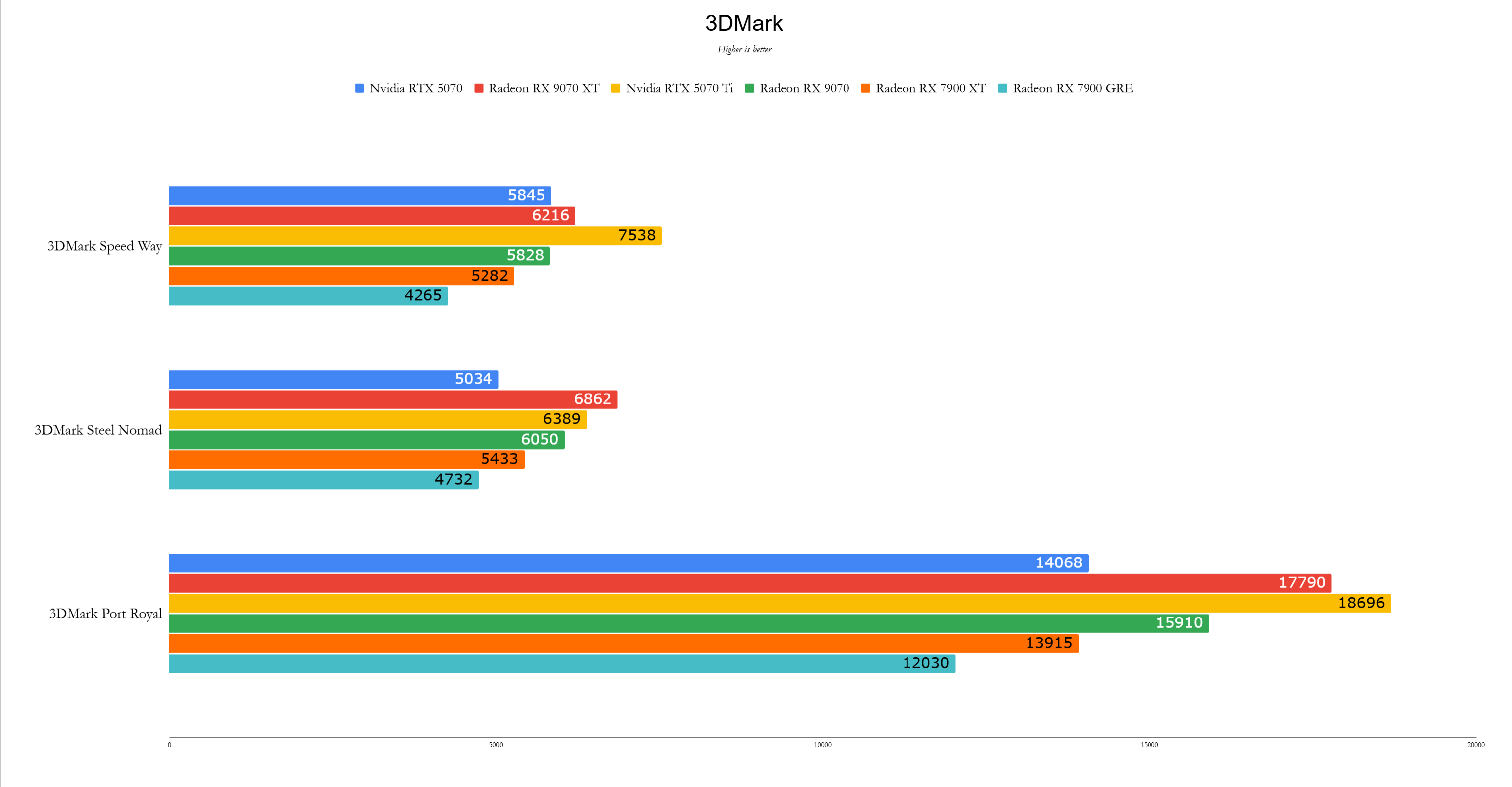
 11 Images
11 Images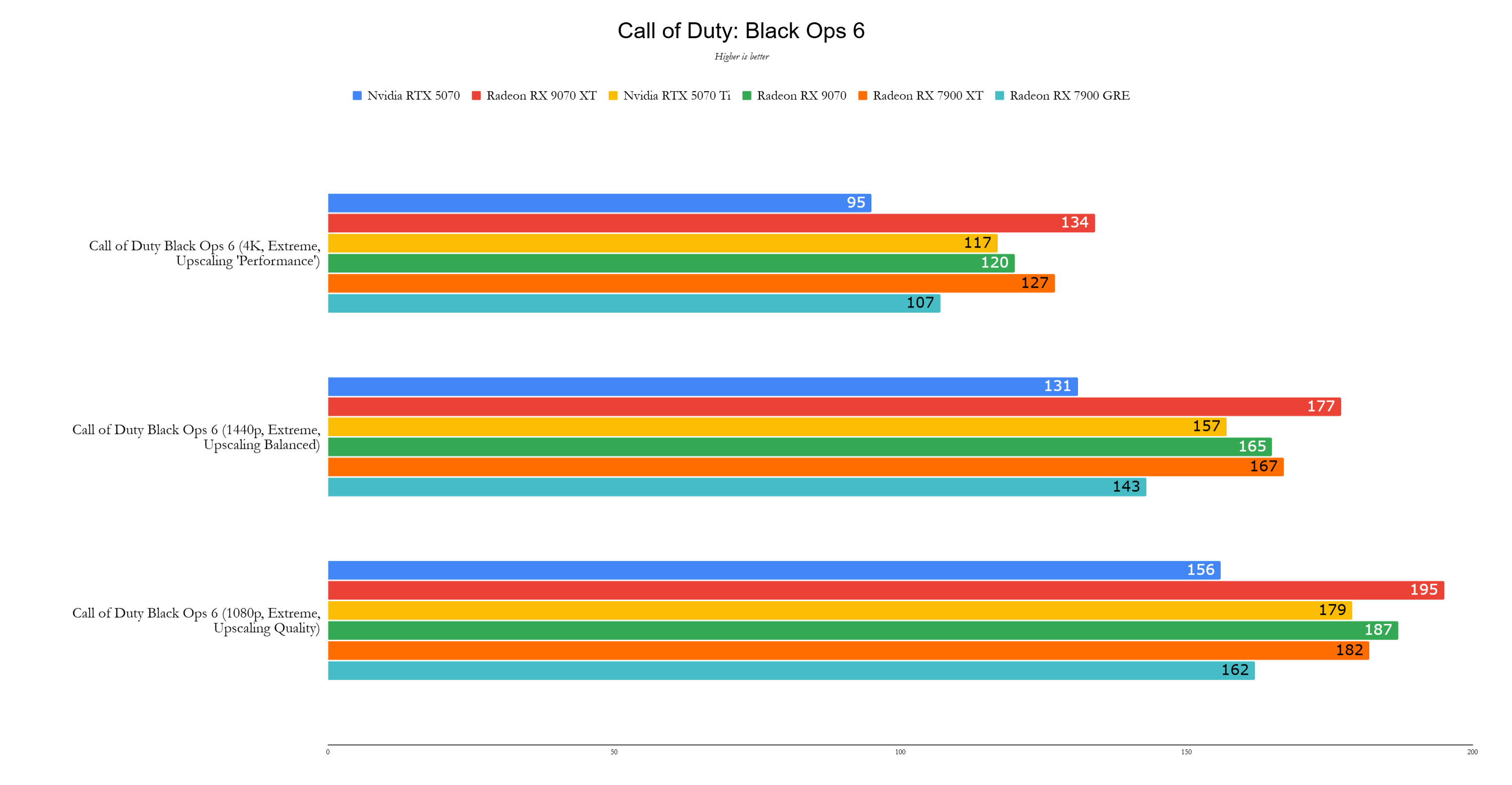
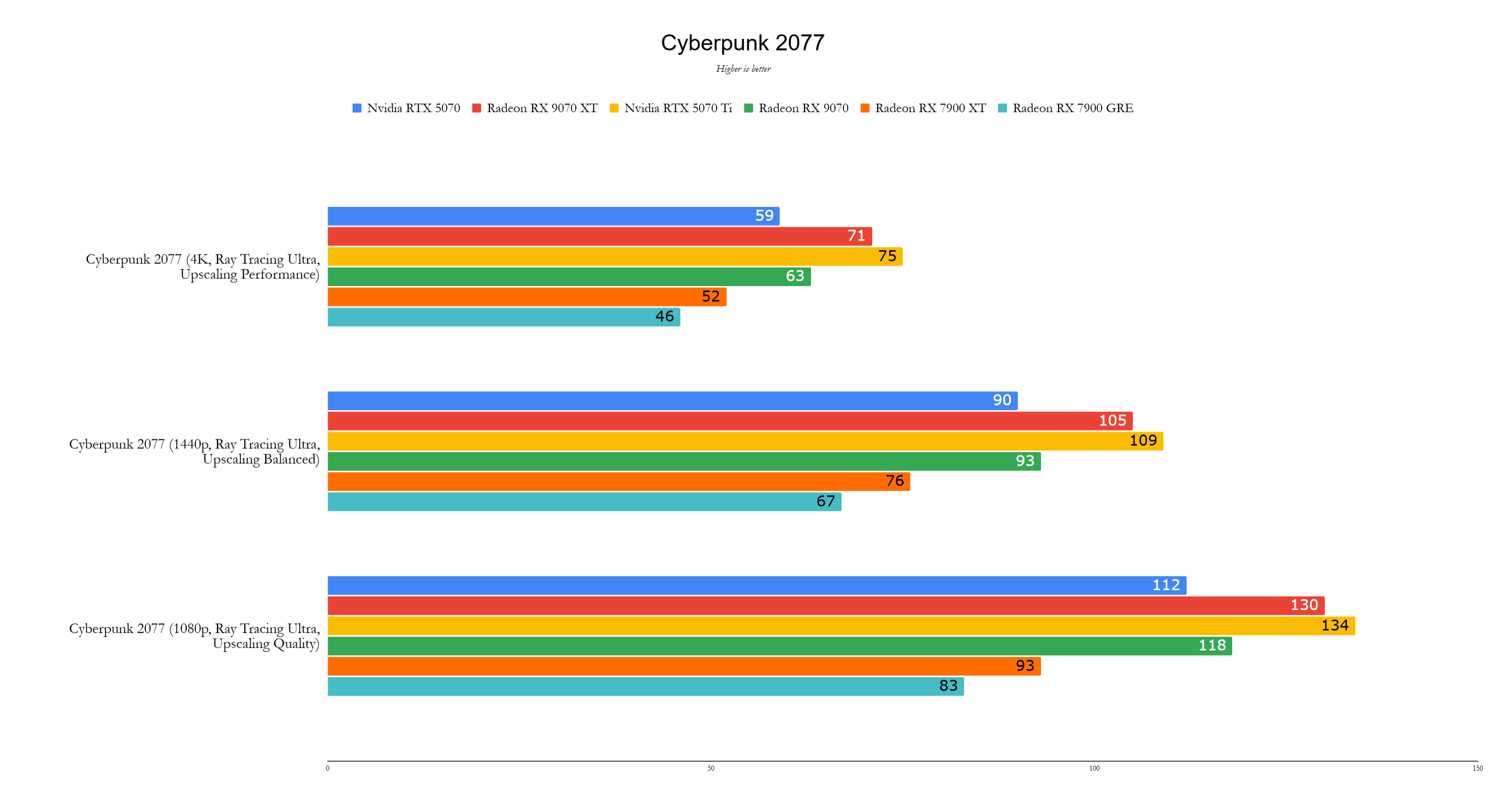

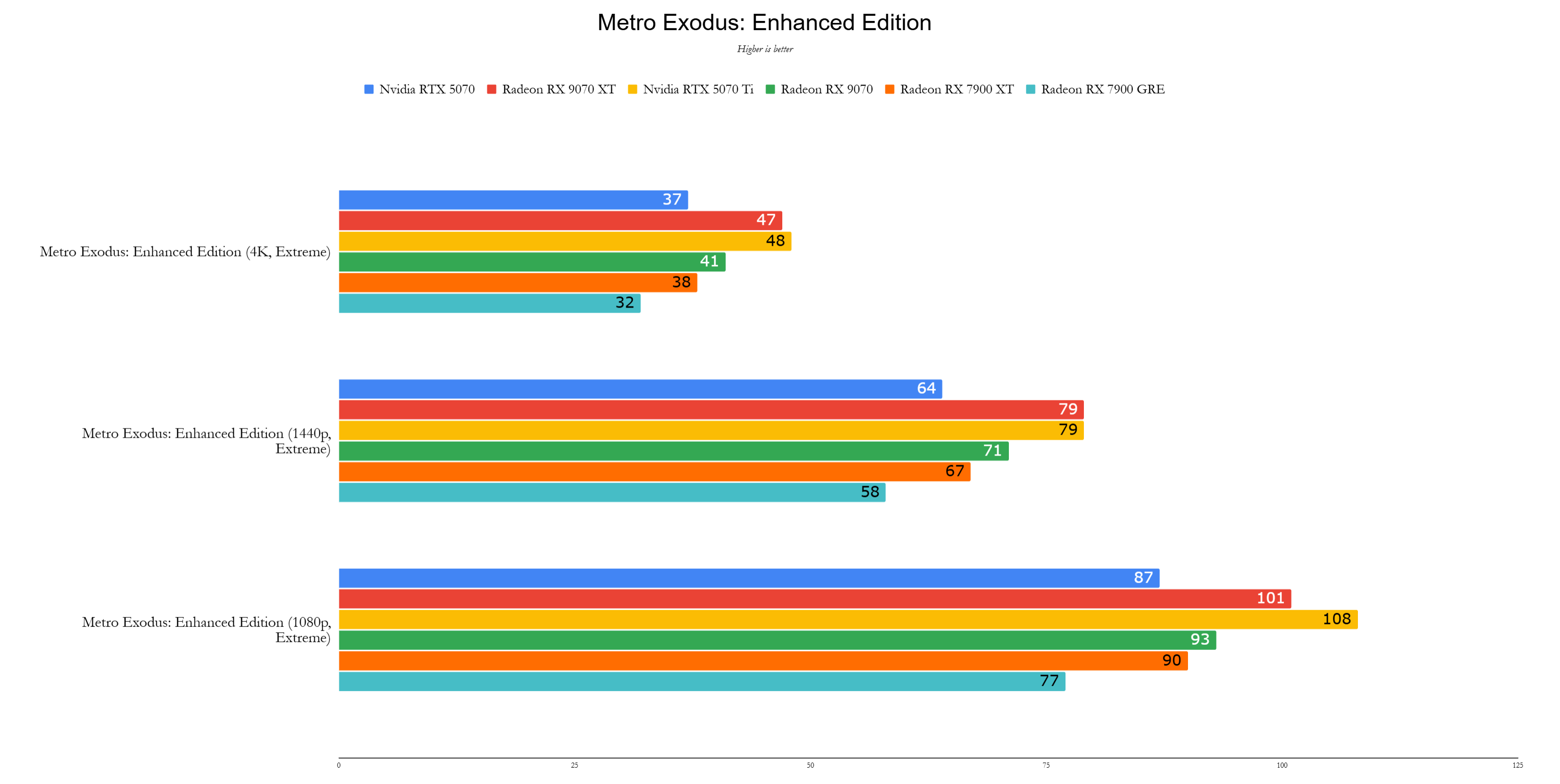
Performance
The AMD Radeon RX 9070 XT delivers impressive performance for its $599 price point, outperforming the Nvidia GeForce RTX 5070 Ti, priced at $749, by an average of 2%. While there are games where the RTX 5070 Ti has the upper hand, the close competition between these two cards is a significant achievement for AMD.
Across my test suite, the RX 9070 XT was 17% faster than the RX 7900 XT, which launched at $899 two years ago, and 2% faster than the RTX 5070 Ti. Its performance at 4K resolution, even with ray tracing enabled, makes it an excellent entry-level choice for 4K gaming.
All graphics cards were tested with the latest available drivers. Nvidia cards used Game Ready Driver 572.60, except for the RTX 5070, which was on review drivers. AMD cards were tested with Adrenalin 24.12.1, except for the Radeon RX 9070 XT and RX 9070, which used pre-release drivers provided by AMD.
While 3DMark isn't a playable game, it provides valuable insights into GPU potential. The 9070 XT outperformed the 7900 XT by 18% in Speed Way, though it lagged 18% behind the RTX 5070 Ti. However, in the Steel Nomad benchmark, the 9070 XT's performance increased by 26% over the 7900 XT and even surpassed the RTX 5070 Ti by 7%.
Test System
CPU: AMD Ryzen 7 9800X3D
Motherboard: Asus ROG Crosshair X870E Hero
RAM: 32GB G.Skill Trident Z5 Neo @ 6,000MHz
SSD: 4TB Samsung 990 Pro
CPU Cooler: Asus ROG Ryujin III 360
In Call of Duty: Black Ops 6, the Radeon RX 9070 XT led the GeForce RTX 5070 Ti by 15%, showcasing a preference for AMD hardware. The RX 7900 XT, on the other hand, was only 6% slower than the new card.
Cyberpunk 2077 traditionally favors Nvidia cards, but the RTX 5070 Ti's lead over the Radeon RX 9070 XT was a modest 5% at 4K with Ray Tracing Ultra and FSR 3 in performance mode. The RX 9070 XT achieved 71 fps, while the RTX 5070 Ti reached 75 fps, highlighting the significant price difference between the two.
Metro Exodus, tested without upscaling at 4K, saw the Radeon RX 9070 XT closely matching the RTX 5070 Ti, with 47 fps compared to 48 fps. The last-generation RX 7900 XT struggled, managing only 38 fps, a 24% improvement for the 9070 XT.
Red Dead Redemption 2 showcased the Radeon RX 9070 XT's Vulkan performance, achieving 125 fps with all settings maxed out, outpacing the RTX 5070 Ti's 110 fps and the RX 7900 XT's 106 fps.
In Total War: Warhammer 3, the Radeon RX 9070 XT fell 13% behind the RTX 5070 Ti, with 76 fps compared to the 7900 XT's 71 fps.
Assassin's Creed Mirage saw the RX 9070 XT reclaim its lead, achieving 163 fps, outperforming the RTX 5070 Ti's 146 fps by 12% and the 7900 XT's 150 fps by 9%.
Black Myth Wukong provided a surprising win for the RX 9070 XT, achieving 70 fps at 4K with the Cinematic Preset and FSR set to 40%, compared to the RTX 5070 Ti's 65 fps, an 8% lead. This game, known for its intensive ray tracing, demonstrated the significant improvement in AMD's Ray Accelerators over RDNA 3, as the RX 7900 XT only managed 60 fps.
Forza Horizon 5 saw the Radeon RX 9070 XT achieving 158 fps, slightly ahead of the RTX 5070 Ti's 151 fps by 5%, showcasing the card's aggressive performance.
Announced quietly at CES 2025, the Radeon RX 9070 XT seems to be AMD's strategic move against Nvidia's Blackwell graphics cards. Priced at $599, it represents a return to a more reasonable market for graphics cards. While it may not match the raw speed of the RTX 5080 or RTX 5090, those cards are overkill for most gamers and cost significantly more.
The last great flagship graphics card was arguably the GTX 1080 Ti, launched at $699 in 2017. The Radeon RX 9070 XT, while not the absolute fastest, feels like the first worthy flagship since then, offering exceptional value and performance for the majority of gamers.



